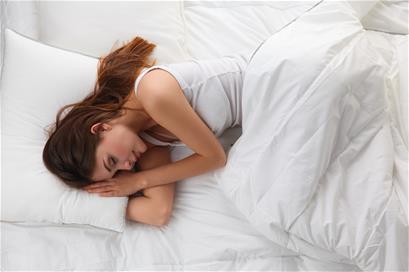
What Your Sleep Position Says About Your Health
Sleep is a part of life that I think most people take for granted. But, do you know what your sleep position says about your health?
It is a time to turn off the engine and reset the mind and body after a long day.
It would seem something as instinctual as sleeping would come naturally and without issues; however, there seem to be more and more obstacles to that vital “good night’s sleep.”
One reason is that some people have a lot of difficulty finding the correct sleeping position.
We all have had nights of tossing and turning while being unable to drift away to sleep. Some of the most common reasons reported for difficulty falling asleep or sustaining sleep include stresses at work or home, heartburn, back and neck pain, and fatigue.
Regardless of whether these issues cause the disruption in sleep or vice versa, we need to be proactive in changing sleep positions to prevent the damaging long-term effects of sleep deprivation both psychologically and physically.
Back Sleeping
Hands down the best sleeping position out there!
This position allows the spine to stay in a neutral position while still be supported. For people out there with low back pain, I recommend taking a pillow and placing it under the knees to help keep them bent as you sleep. This allows the natural curvature of your spine to be maintained without jamming the joints as we see in stomach-sleepers.
Sleeping on your back can also help prevent and even alleviate neck pain and stiffness. In regard to neck pain, pillow support (or lack thereof) plays a larger role than sleep position. While sleeping or lying down for extended periods of time, the head and neck should be parallel to the rest of the body, but also elevated in a neutral position.
Most people (or at least their significant others) are not fans of sleeping on their backs because it often results in snoring. A way to counter waking your sleeping partner is by putting yourself in the “Sniffing Position.” This is done by placing additional pillows behind the head and upper back allowing the airway to stay in an opened position.
This position has also been shown to help with severe heartburn by taking pressure off the lower esophageal sphincter, which may open and become irritated due to reflux of stomach acid creeping up during the night.
Side Sleeping
Shoulder pain is most often helped by sleeping on your side.
Although this may sound counterintuitive, if done properly, this can give the shoulders and neck the rest they need and deserve!
More often than not, when people sleep on their side one arm is raised up under the head or pillow, compressing the nerves and blood vessels that supply the arm. Instead, try positioning yourself with the uninjured shoulder on the bottom with the arm extended out in front. Next bring the arm directly back so the scapula (that shoulder blade bone) is no longer being pinned down under your body.
Also, if you are a side sleeper, it is helpful to tuck a pillow between the legs to ensure that the top leg can move forward. This will help keep the hips in a neutral position while preventing any torsion in the low back.
Stomach Sleepers
Stomach sleeping is almost universally accepted as the worst sleeping position for your health!
It puts the spine in a flat position, removing the natural curvature. This often jams the joints of the spine which reside in the neck and lower back (facet joints for all you anatomy geeks!). The only real benefit of stomach sleeping is that it reduces the likelihood of snoring.
There is some research that suggests sleeping on your stomach can help promote healthy digestion; however it is not a good idea to eat a large meal prior to sleeping for the night anyway as this promotes conversion of food into fat stores.
Lastly, and I’m sure this goes without saying, but I’m going to say it anyway: You want to have a good, supportive mattress.
When searching for a mattress, your main concern should be low- and mid-back comfort, as pillows can always be added as needed for neck support. Also keep in mind that while memory foam mattresses often give the most support, they also retain the most heat. Knowing this, the mattress companies are now making memory foam mattresses with cooling gel and other products to keep the heat down!
So try a different sleep position tonight and see if it works to cure or decrease your aches, pains and ability to fall asleep. Good luck and sleep tight! We hope you enjoyed learn what your sleep position says about your health. Contact Nava Center for more information.

A Medical Director, and one of the first physicians to join the Nava Health & Vitality Center, Dr. Douglas Lord has made significant contributions to our Center and its founding principles. Dr. Lord has helped develop and implement the Nava Method™—Nava’s proprietary approach to total body wellness. He has also been instrumental in liaising with other expert practitioners to successfully implement Nava’s range of therapies, treatments, and products.